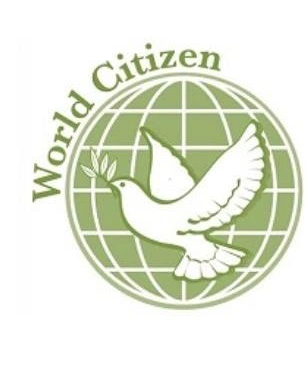On Monday august the 4th, from Glasgow, Scotland to Liege and the small Saint-Symphorien in southern Belgium, leaders of the former enemies Belgium, France, Britain and Germany stood together in a spirit of reconciliation to commemorate the 100th anniversary of the start of conflict that became known as The Great War.
Peggy Noonan, writing in the Wall Street Journal last week, noted world leaders had their lives altered by the war as thoroughly as the map and the soldiers and the civilians. Kaiser Wilhelm of Germany and England’s George V became haunted, melancholy men; Czar Nicholas II of Russia lost his life and his throne to the Communist upheaval following the war; U.S. President Woodrow Wilson ultimately had a series of strokes after attempting to police peace conferences that followed the war.
History books typically refer to countries “drawn in” to the war, through prior mutual commitments and fears of loss of influence, and after Austro-Hungary declared war on Serbia on July 28, 1914, it was followed by mobilizations, demands unheeded and declarations of war. Nations were drawn in, not like dominoes falling but more like the vortex of water down the drain. { Ed Adamczyk in Europe notes 100th anniversary of World War I}
The great sacrifice and the contribution of the Belgian soldiers who wanted to protect the neutrality and sovereignty of Belgium was remembered first in Liège, where-after the several world leaders went to Mons.
What could have started as seen by Berlin a war based only on “military logic,” had brought an incredible bloodshed in the areas where previously several European forces had already tried to get more power over on or the other. Once more the grounds of Flanders could become the battlefield of Europe. But this time it stated in Wallonia with big battles in Liège and Mons.

22 August 1914: “A” Company of the 4th Battalion, Royal Fusiliers, resting in the town square at Mons. (Photo credit: Wikipedia)
One hundred years ago the British had disembarked at ports along the coast of northern France, ignorant of what was to come and fortified by the belief that the Germans would surely soon be routed and they could all return home for Christmas. Their generals, under the command of Field Marshal Sir John French, had never intended to participate in a major engagement at Mons, this was only to be a temporary base. The flight of the French 5th Army in the area meant they had to hold the line against an advancing army that had previously taken Liège.
Liege’s fierce resistance derailed Berlin’s plans for a quick victory. After Liege, it was the turn of Mons where the first and last British soldiers found their rest-place.

Map of the Battles of Charleroi and Mons, southern Belgium, during the Battle of the Frontiers, 21-24 August, 1914. French, British and Belgian units are shown in red, German units are shown in blue. Fortress towns are marked with a shaded red circle. (Photo credit: Wikipedia)
Neither did the Germans, for their part, imagine that their foes were present in numbers in Belgium. The two armies, neither knowing the other’s movements or numbers, were thrown together in combat on territory not of their choosing. And so the Battle of Mons began on 23 August and ended the following day, each side claiming glory, but with the British soldiers frustrated at being ordered to retreat when it appeared they held the advantage. {Kevin McKenna in Mons prepares to mark centenary at place where first and last British soldiers fell}
The present German President Joachim Gauck considered that the invasion of the neutral Belgium by the German troops “opened Pandora’s Box,” and acknowledged that it was anything but self-evident to stand and talk to the Belgians and allied forces on that 4th of august 2014. He was well aware of the atrocities his fellow countrymen brought to many civilians but also many world treasures as the ones who went up in flames in Leuven.
British Prime Minister David Cameron hailed the spirit to heal such deep wounds and such deep-rooted enmity.
“We should never fail to cherish the peace between these nations and never underestimate the patient work it has taken to build that peace,” he said at dusk, a few hours before the moment Britain declared war on Germany a century ago.
The Mons ceremony focused on the small military cemetery of Saint-Symphorien, where 229 Commonwealth and 284 German soldiers were buried together in a gesture of reconciliation even as the fighting raged.The place was only open to invited guests. Common folks could have a glimpse of the world leaders in Mons city itself, where my friend Steve took some photographs where you might find my selection here underneath.
Already early in the day people started coming to the Grand Place.

Mons, 16th-century main square of Mons or Grand Place becoming filled with trilled people. – Impression of the royal visit for the 1914 memorial in Mons – Photo by Steve Robinson
Also from the balconies people wanted to have some proper view on the political celebrities, showing clearly how the population appreciated the presence of the princes from Great-Britain.

Everywhere people could find a place to see more, was taken. – Impression of the royal visit for the 1914 memorial in Mons – Photo by Steve Robinson
For those who could not be there (like me) the Belgian television presented live viewing of the celebrations, and people at several places in the country also could follow on big screens.

On screens people could see what was hidden by the crowd. – Impression of the royal visit for the 1914 memorial in Mons – Photo by Steve Robinson
It was funny how the French president could not do different than premier Di Rupo who went out of the car to meet the public, against security rules. First afraid he soon came loose and enjoyed the contact with the enthusiast public.

The major of Mons and ex-premier of Belgium welcoming the royal visitors. – Impression of the royal visit for the 1914 memorial in Mons – Photo by Steve Robinson

coming on the balcony of the town-hall. – Impression of the royal visit for the 1914 memorial in Mons – Photo by Steve Robinson

Good fun? at the pleasant moment in front of an enthusiastic public. – Impression of the royal visit for the 1914 memorial in Mons – Photo by Steve Robinson
From the city, after lunch they went to the intimate Commonwealth War Graves Commission’s St. Symphorien Military Cemetery 2 km east of Mons. Due consideration to public safety, as well as the scale of operation needed to ensure the site is ready and then returned to normal on completion it was closed for several days for the general public.

At ordinary days the Commonwealth War Graves Commission’s St. Symphorien Military Cemetery in St. Symphorien near the city of Mons has a peaceful tranquillity.
+
Surrounded by fields and trees, it has a peacefulness that sometimes makes one feel anguished. There are two areas: one with the German graves, the other with British ones. This is administered by the Commonwealth War Graves Commission that maintains it in an admirable manner.
The cemetery at St. Symphorien was established by the German Army during the First World War as a final resting place for British and German soldiers killed at the Battle of Mons. The owner of the land Jean Houzeau de Lehaie, only wanted to sell it when the Germans would allow it that also other victims would be buried on the same grounds. He sold his land to the Germans who kept word, so that today it is one of the very few graves where soldiers from both sides can be found laying together on the same ground.

The Duchess of Cambridge walks with King Philippe of Belgium and Queen Matilde of Belgium past war graves at St Symphorien Military Cemetery
Among those buried in the graveyard is Private John Parr of the Middlesex Regiment, who possibly was fatally wounded during an encounter with a German patrol two days before the battle, but could also be killed by friendly fire. But him being killed in a foreign country made him the first British soldier to be killed in action on the Western Front. Opposite him lies the last Commonwealth soldier killed, shortly before the armistice at 11am on 11 November 1918, Private George Ellison. He and George Ellison of the Royal Irish Lancers and George Price of the Canadian Infantry are believed to be the last Commonwealth combat casualties of the war in Europe.
The cemetery remained in German hands until the end of the war, and afterwards came under the care of the Imperial (now Commonwealth) War Graves Commission. There are 229 Commonwealth and 284 German servicemen buried or commemorated at St Symphorien, of whom 105 remain unidentified. The largest number of graves are those of the 4th Middlesex. Here you will also see the tombs of the soldiers who died liberating the city of Mons in November 1918.
German Musketier Oskar Niemeyer, the first Iron Cross of the war, who swam across the canal in the face of gunfire to help his comrades cross the water his grave can also be found here. In several places, British and German soldiers lie almost side by side.
By the evening of 22 August 1914, the men of II Corps of the British Expeditionary Force had taken up defensive positions along the Mons-Condé Canal, preparing for a major German attack expected to come from the north the next day. The opening shots of the Battle of Mons were fired at dawn on the morning of Sunday 23 August, when the 4th Battalion of the Middlesex Regiment repulsed German cavalry who were attempting to the cross the canal over a bridge at Obourg. The early morning was misty and wet, and the British were still uncertain of the numbers of enemy troops on the far side of the canal. By 10 a.m., the day had brightened up, artillery fire had intensified, and it became clear that they were facing a large German force.
Despite being outnumbered, the British soldiers on the south bank of the canal fought tenaciously throughout the day. Many were reservists who had returned to the army just weeks before, but they were well-drilled and disciplined, with a high-level of rifle training. Their relentless fire inflicted heavy casualties among the Germans. Despite this stiff resistance, the sheer weight of German numbers and the accuracy of their artillery meant that the British struggled to hold their positions. By 10.30 a.m. the first German soldiers had crossed the canal and some British units had been forced back, and by mid-afternoon German infantry troops were crossing in force. By nightfall, the Battle of Mons was over and the British had begun a long, hard retreat towards Paris.(Cemetery Details)
Even in defeat, the allied effort that claimed British Captain Kenneth James Roy’s life on Aug. 23, 1914, helped slow the German advance toward France that eventually bogged down as it was closing in on Paris.
When German Gefreiter Reinhold Dietrich died, on Oct. 28, 1918, it was the Germans’ time to withdraw in defeat.
The sun went already down when the Duke and Duchess of Cambridge, Prince Harry, the King of the Belgians, Prime Minister David Cameron and the presidents of Germany and Ireland came with flowers and lanterns to honour the day the world changed for ever.
 Amid earnest obelisks and monuments to the fallen of both sides, there was not the faintest hint of triumphalism, merely the warm glow of reconciliation.
Amid earnest obelisks and monuments to the fallen of both sides, there was not the faintest hint of triumphalism, merely the warm glow of reconciliation.

Prince Harry, Belgium’s Queen Mathilde, the Duchess of Cambridge Belgium’s King Philippe, Prime Minister David Cameron and Prince William at the memorial St Symphorien cemetry near Mons, Belgium
Historian Dan Snow narrated the memorial service last Monday, for about 500 guests including the Duke and Duchess of Cambridge, Prince Harry, David Cameron, Gauck and King Philippe of Belgium, features readings, music and poetry capturing the history of the site and acknowledging the British, Irish, Commonwealth and German soldiers killed at Mons.
World War I is now often depicted as senseless slaughter without a big moral cause that claimed an estimated 14 million lives, including 5 million civilians, sailors and airmen from 28 countries.
British Prime Minister David Cameron sought to debunk that notion.
“That is wrong. These men signed up to prevent the domination of a continent, to preserve the principles of freedom and sovereignty that we cherish today,”
he said, only dozens of footsteps away from the headstones of Roy and Dietrich and 241 other Commonwealth and 288 German casualties.
Prince William said:
“The fact that, Mr Presidents, you are here today to represent Germany and Austria, and that other nations, then enemies, are here too, bears testimony to the power of reconciliation.
“Not only is war between us unthinkable, but former adversaries have worked together for three generations to spread and entrench democracy, prosperity and the rule of law across Europe, and to promote our shared values around the world.”
+
Preceding articles:
August 4, 1914 to be remembered
Liège 2014 remembering the Great War
++
Find also to read:
- 1914 – 2014 preparations
- 100° birthday of war and war tourism
- Flames of Louvain – Leuven 1914 an attempt to destroy a civilisation
- All the war-propaganda, all the screaming and lies and hatred, comes invariably from people who are not fighting… George Orwell
- 11 November, a day to remember #1 Until Industrialisation
- 11 November, a day to remember #2 From the Industrialisation
- A good team to guaranty a musical about the First World War
- Juncker warns for possible new war
- Friendship and Offer for the cause of democracy
+++
Related articles
- President Higgins in Belgium to mark start of first World War (irishtimes.com)
President Michael D Higgins and his wife Sabina will take part in an international commemorative ceremony in Liège in Belgium today to mark the beginning of the first World War.
This evening the President and Mrs Higgins will attend a service hosted by the UK at Mons, where the first British army casualties of the war – including a number of Irish soldiers – are buried.
- Europe started WWI a century ago, blind to tragedy (star-telegram.com)
With soaring tensions over Ukraine, the causes of World War I have had special resonance this year. A century ago few thought war was imminent until the June 28 killing in Sarajevo of Archduke Franz Ferdinand of the Austro-Hungarian empire.Yet those shots fired by Serb nationalist Gavrilo Princip in Bosnia-Herzegovina carried tragic echoes. A political puzzle of complicated alliances fell into place that inexorably closed in on total war between the alliance of German and the Austro-Hungarian empires and the Allied powers of Britain, France and Russia.Then as now, global peace and prosperity did not seem an unreasonable expectation.“Europe went so quickly from peace to war — five weeks, from the assassination June 28th in Sarajevo to a general war on Aug. 4,” said MacMillan. “And you do feel, ‘don’t you realize what you will be throwing away.’ People are on summer holidays in these lovely towns. Europe is getting more prosperous and they are about to throw themselves into this catastrophic struggle.”
- Former Enemies Unite for WW I Commemoration (voanews.com)
Britain’s Prince William recalled how European beachgoers in Belgium found their summer holiday shattered by the outbreak of the Great War.”During four terrible years, those same Europeans were engulfed by killing and destruction. Among the very first victims were the people of Belgium, whose resistance was gallant as their suffering was great,” he said.The war hit Liege early and hard. The city sustained two days of heavy shelling. On August 22, 1914, 70,000 soldiers were killed in a single day of fighting. - The Spectator at war: Gallant little Belgium (blogs.spectator.co.uk)
The war continues to be as amazing as ever. We have now had actual firing for over ten days and yet there has been no serious invasion of French soil. What one was always told would happen in the great war, and what undoubtedly the German meant should happen, was a steady and rapid advance of the stupendous tide of German soldiers into France. Wave was to succeed wave of men on the frontier and all of them were to have their faces turned to France and Paris. The sea, no doubt, was to break in through Belgium, but Belgium, it was confidently predicted, would make no serious opposition. It would flow over Belgium just as an incoming tide flows over and covers as isolated rock. In a word, the Germans were to turn neither to the right nor to the left for anything the Belgians might sat or do, but keep steadily on their appointed course. - William and Kate join commemoration for WWI heroes to mark 100th anniversary of First World War outbreak (standard.co.uk)
William also praised how, as Europeans, we had worked together to promote “democracy, prosperity, the rule of law” and “shared values” around the world.
+
Prince Harry was joining William and Kate there after attending the “Step Short” remembrance event in Folkestone to observe the centenary.He unveiled a Memorial Arch, laid a wreath at the War Memorial and took the salute of a military and civilian parade. - German president condemns his country’s invasion of Belgium on anniversary of WW1 (irishtimes.com)
Mr Gauck condemned his country’s invasion of Belgium as “completely unjustifiable”.
The treaty guaranteeing Belgium neutrality was rendered “worthless” by Germany’s actions.
He also condemned the behaviour of German troops in Belgium, who shot innocent civilians and burned the world-famous Catholic library at Leuven to the ground.
“On the very first day it became apparent that standards of civilisation can be rendered null and void,” he said.
The conduct of the German troops had spread “fear, shock and rage far and wide”.
He also excoriated the intellectuals and artists in his country for justifying the war shortly after it started.
“What had happened to the civilisation called Europe?” he asked.
- WW1 centenary: Timetable of memorial events (itv.com)
Sir Edward famously remarked, “The lamps are going out all over Europe; we shall not see them lit again in our lifetime.” - St Symphorien: making up not breaking up (timesonline.typepad.com)
I was dead lucky last night, as I got to go to the WW1 commemorative event at the cemetery at St Symphorien, just outside Mons in Belgium. The reason is that I have been, for a few months now, on the Government Advisory Committee for the Commemoration of WW1, and the members could more or less choose which of the big three August 4 events to go to. I felt that — despite the time and considerable expense — I was only going to feel really comfortable and at home in a commemoration that involved men and women from the different “sides” in the War: where we could celebrate reconciliation and be thankful that we were, for the most part, no longer killing each other in Western Europe (I’m choosing my words carefully).
































 Biblestudents – Bijbelstudenten
Biblestudents – Bijbelstudenten 0 + Bloggers for Peace
0 + Bloggers for Peace Free Christadelphian Ecclesia
Free Christadelphian Ecclesia Hoop tot Leven – Redding in Christus
Hoop tot Leven – Redding in Christus Vrije Broeders in Christus (Free Flemish Christadelphians on Wordpress)
Vrije Broeders in Christus (Free Flemish Christadelphians on Wordpress)















Pingback: Reflections on the Great War #1 | From guestwriters
Pingback: Reflections on the Great War #2 | From guestwriters
Pingback: Honouring hundreds of thousands of victims of the brutal Somme battle | Marcus Ampe's Space
Pingback: The Somme (1916) Working Class Holocaust | From guestwriters
Pingback: July 4, 1916 – Battle of the Somme greeted with ‘the greatest enthusiasm’ | From guestwriters
Pingback: The Great War changed everything | Marcus Ampe's Space
Pingback: The War to end all wars | From guestwriters
Pingback: Why are we killing? | From guestwriters
Pingback: Anatomy of a World War I Artillery Barrage | Marcus Ampe's Space
Pingback: Centenary of Armistice Day – Belgian Ecclesia Brussel – Leuven